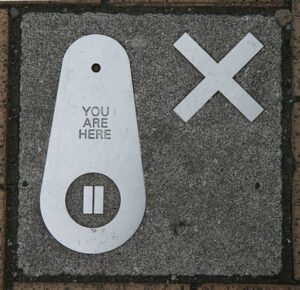A new report by the Brookings Institution illustrates what it says is one significant driver of college costs. The report pertains to universities – more specifically – flagship universities and their out-of-state students.
According to the authors, a significant increase in the number of out-of-state students at these institutions causes student loan debt to rise. The report posits that these institutions increase their out-of-state enrollment to make up for decreases in state funding. States, in turn, decrease the amount of budgetary support based on the number of out-of-state students enrolled.
While the Brookings Institution report looked specifically at the largest public universities in each state, the temptation to enroll out-of-state students is not limited to four-year institutions. Washtenaw Community College has gone out of its way to encourage the enrollment of out-of-state students by offering significantly discounted tuition for online enrollment.
I wrote about this last week. The current tuition model at WCC charges in-district students a 12% premium over in—person tuition rates to take online-only courses. The Board of Trustees has approved a 27% discount for out-of-district students and a whopping 75% discount for out-of-state students.
If the same 12% premium that in-district students pay applied to out-of-district and out-of-state students, the cost of a 60-hour WCC degree would be $11,350 for out-of-district students and $16,061 for out-of-state students. It’s not clear why it costs WCC 12% more to educate online in-district students, but it costs 27% less to educate out-of-district students and 75% less to educate out-of-state students. Same classes, same teachers, same technology infrastructure: vastly different cost structures.
Nonetheless, this is the tuition model the Board of Trustees has stuck the residents of Washtenaw County with. Effectively, taxpayers here subsidize the educations of out-of-district and out-of-state students.
Washtenaw County taxpayers did not agree to fund out-of-state students
There is no doubt that the admission of out-of-state students to flagship universities is irksome. But the danger of inequitably distributing educational resources to out-of-state students at the community college level is somewhat different. Unlike flagship universities, where the admissions process is highly competitive, community colleges admit virtually anyone. Unfortunately, the cost of operating a community college is heavily taxpayer subsidized. County property taxes and the state appropriation make up about two-thirds of WCC’s revenues.
When the Board of Trustees opens access to the community college without considering the heavy taxpayer subsidy, it runs the risk of losing state funding. If you want to know the impact of losing a state subsidy, please review Eastern Gateway Community College. EGCC in Steubenville, OH enrolls a mostly out-of-state student body using the lure of “free tuition.” And when I say “mostly” I mean upwards of 95%. Students apply for federal Pell Grants to subsidize their EGCC tuition.
To avoid exactly the type of subsidy that the WCC Trustees have authorized, the State of Ohio bases its per-student funding calculation on Eastern Gateway Community College’s 1,800-resident student body. The change in the funding model means that the State of Ohio kicks in a relatively paltry amount of funding. Since most students don’t pay tuition, that leaves the federal government to pick up the tab for EGCC, via the Pell Grant program.
As you can imagine, this doesn’t sit well with the Department of Education. It probably doesn’t sit well with the residents of EGCC’s community college district either. After all, they fronted the money to build EGCC and pay for its infrastructure and upkeep. (The same infrastructure that enables EGCC to serve non-resident students in the first place.)
Washtenaw County is not as rich as WCC administrators would like to believe
The outcome for EGCC has been a net negative. The US Department of Education has eliminated the school’s Pell eligibility. Its accreditation through the Higher Learning Commission (WCC’s accreditor) is at risk of being suspended. And tens of thousands of out-of-state students are in educational limbo because they can no longer enroll in EGCC classes.
The moral of the story is that turning to out-of-state students to pay for the financial sins of the administration may come with a very high cost. Losing Pell eligibility and jeopardizing the school’s accreditation are two really big administrative failures. Clearly, the Department of Education and the Higher Learning Commission will not hesitate to wield these clubs when circumstances demand it.
Well before that happens to WCC, taxpayers in the Washtenaw Community College District should demand that the Board of Trustees end their ridiculous subsidy program for out-of-district and out-of-state students.
Photo Credit: 401(k) 2012 , via Flickr


























